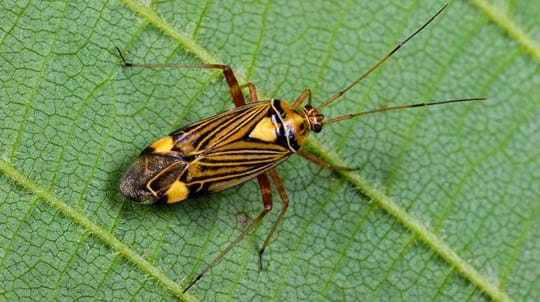
Trees woods and wildlife

Digital Content Manager
Bug, beetle – what’s the difference? Despite the words often being used interchangeably, there’s quite a big difference between bugs and beetles.
Though they may look similar at first glance, dig a little deeper and you’ll find some key features that set bugs and beetles apart. In fact, these characteristics land them in two completely different orders of insect. Here are the top identifying features to help you tell the difference between a bug and a beetle.
Order: Hemiptera
Mouthparts: piercing
Diet: liquids from plants or animals
Wings: membranous
Lifecycle: incomplete metamorphosis
Types of UK bugs: aphid, hawthorn shieldbug, pondskater, common froghopper, water scorpion.
The word 'bug' is used to refer to all kinds of insects, but not all of them are what we call 'true bugs', of the order Hemiptera. There are around 2,000 species of true bug in the UK, including shieldbugs and pondskaters.
When it comes to the difference between these bugs and beetles, some key features set the two apart.
Bugs live off a liquid diet. Their mouthparts are shaped like a beak, called a rostrum, which they use to pierce plants (or sometimes even animals) and suck out the juices.
The wings are membranous - thin and transparent, with noticeable networks of veins. The wings are also thickened at the base.
An exoskeleton is an external skeleton that supports and protects an animal's internal organs. All arthropods (the group of invertebrates that bugs and beetles belong to) have an exoskeleton, rather than an internal skeleton like birds and mammals.
They have an incomplete metamorphosis, where they hatch from their eggs as nymphs – juvenile versions of the adult bug – and moult their exoskeleton several times as they grow (stages known as instars).
True bugs don’t have a pupal stage, which is where some insects cocoon themselves in a hard case and transform into adults inside.
Explore woodland creepy crawlies, from bugs and beetles to snails and spiders, with a pocket-sized swatch book.
Buy it nowOrder: Coleoptera
Mouthparts: chewing
Diet: solids ranging from deadwood to carrion
Wings: hard elytra and membranous hindwings
Lifecycle: complete metamorphosis
Types UK beetles: stag beetle, 7-spot ladybird, wasp beetle, cockchafer, devil’s coach-horse.
Beetles belong to a different biological order than true bugs. Theirs is called Coleoptera. The UK is home to more than 4,000 species of beetle, with around 1,000 of them relying on trees and woodland habitats for food and reproduction.
These key features will help you identify a beetle if you aren’t sure whether you’re looking at a bug.
Their mandibles help them masticate everything from decaying wood to dead animals. The diet of UK beetles ranges hugely: the 7-spot ladybird gorges on aphids, the cockchafer chomps up grass, and the devil’s coach horse preys on everything from worms and slugs to woodlice and caterpillars.
This pair of wings distinguishes beetles from all other insects. They’re called elytra, and are modified into hard, leathery coverings that protect the delicate, membranous hindwings when the beetle isn’t flying.
They go through a complete metamorphosis, moving from egg, to larva, to pupa, and finally the adult insect. For some beetles, like the stag beetle, the larval stage can last for several years, with the larva moulting multiple times before pupating. They’re similar to moth and butterfly larvae, with a hard head, chewing mouthparts, and (usually) legs.
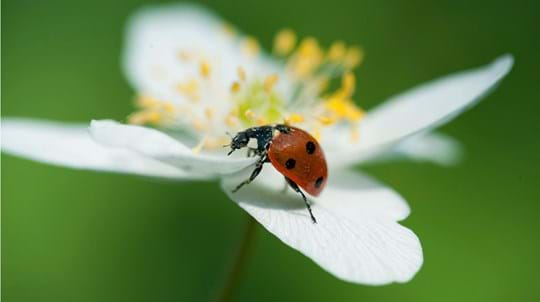
Trees woods and wildlife
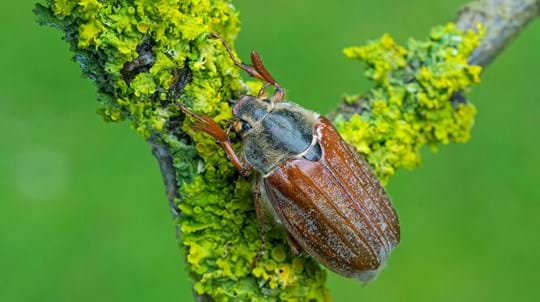
Trees woods and wildlife
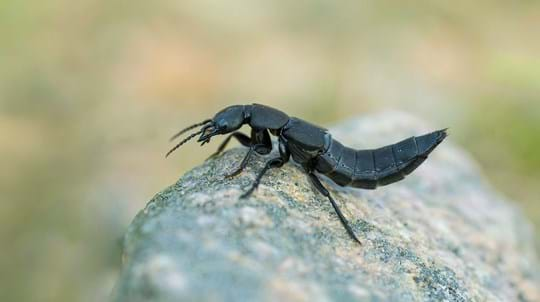
Trees woods and wildlife
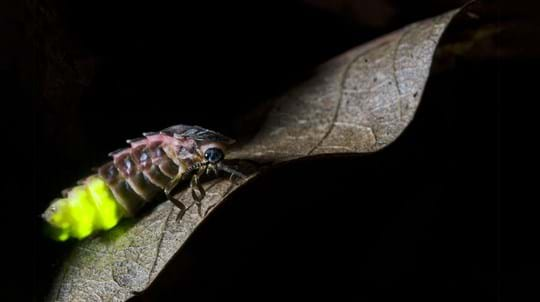
Trees woods and wildlife
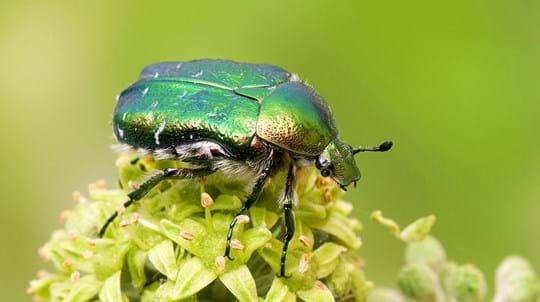
Trees woods and wildlife
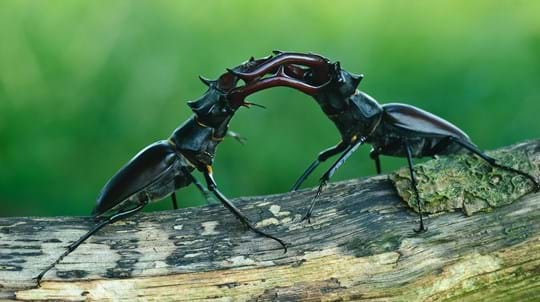
Trees woods and wildlife
Impressive, heavily armed and a formidable fighter. The stag beetle depends on trees and woods for its survival. Find out more about this nationally scarce species.
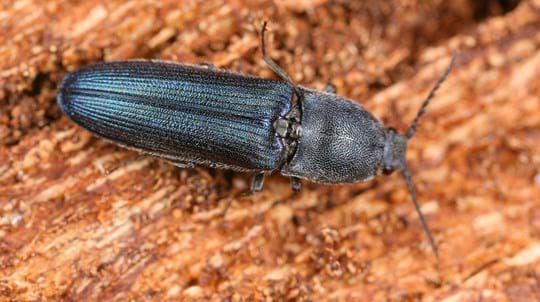
Trees woods and wildlife
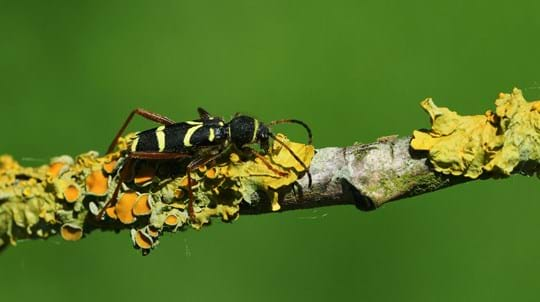
Trees woods and wildlife
Despite living quite different lives in quite different bodies, bugs and beetles do share some similar characteristics.
Beetles and true bugs are both types of insect. The word 'insect' refers to any arthropod (an animal with a segmented body, jointed limbs and an exoskeleton) that sits within the scientific class Insecta. Insects all have the same defining features:
As well as beetles and true bugs, the insect family includes ants, butterflies, moths, grasshoppers and bees, amongst others.
Explore woodland creepy crawlies, from bugs and beetles to snails and spiders, with a pocket-sized swatch book.
Buy it now